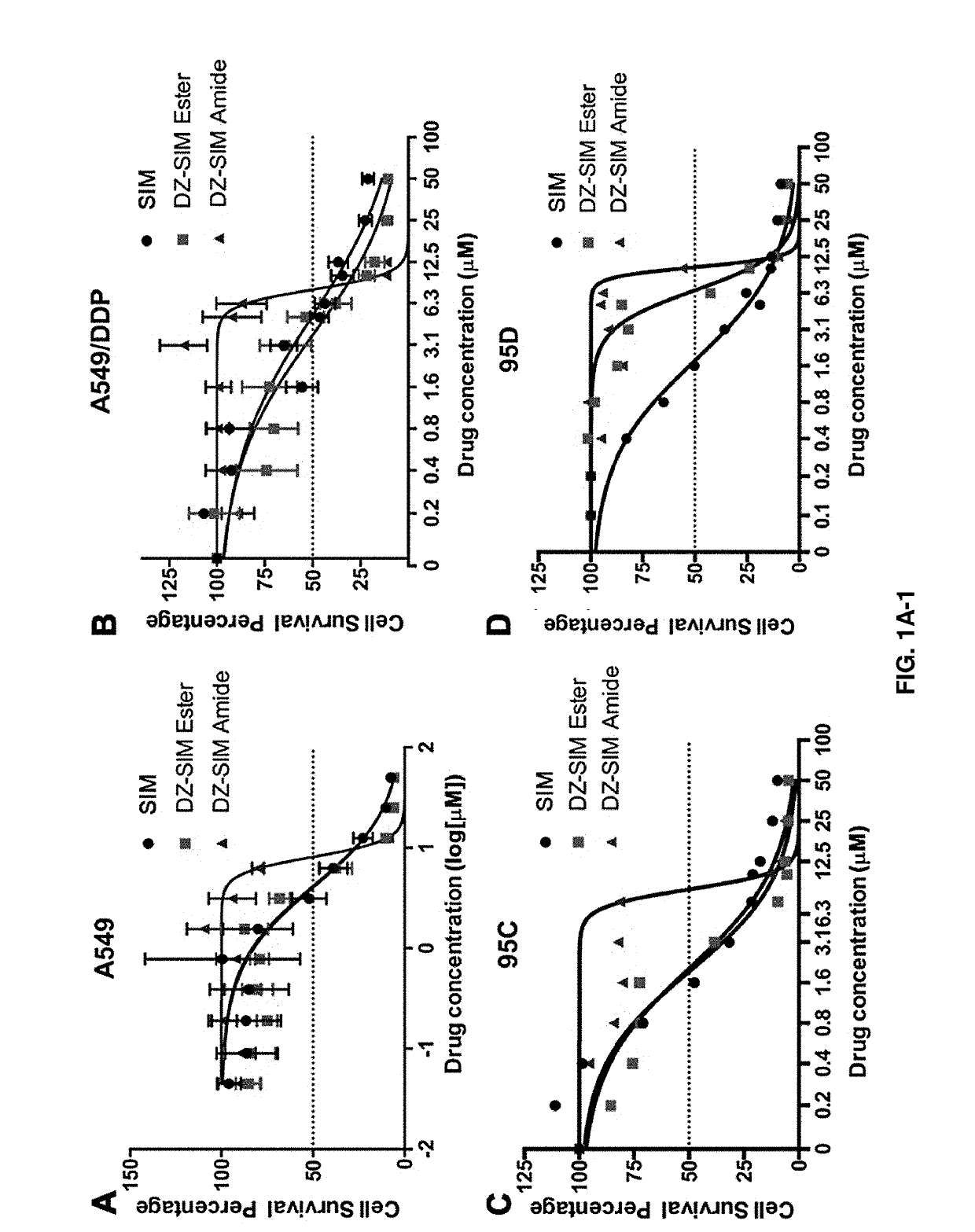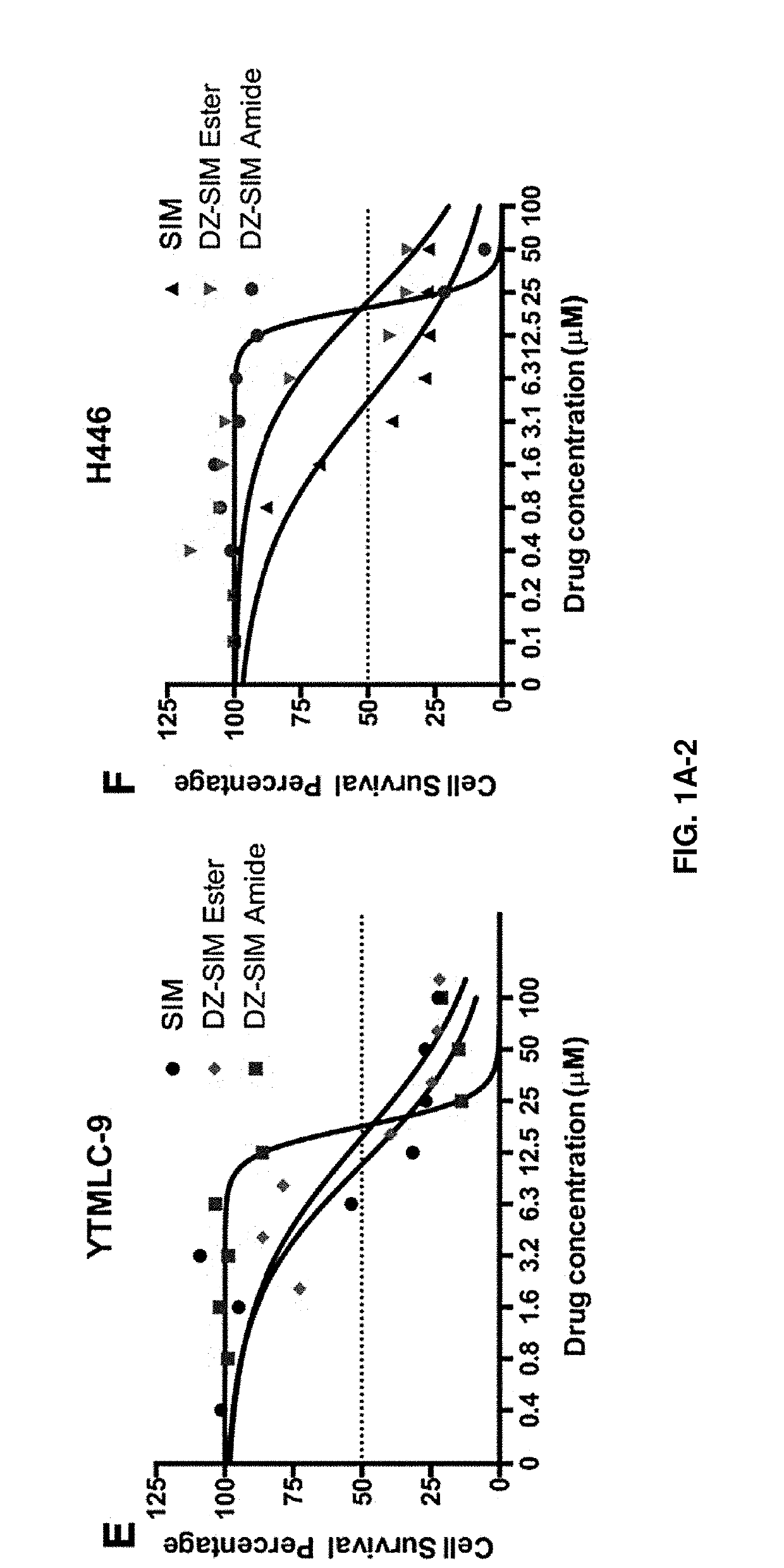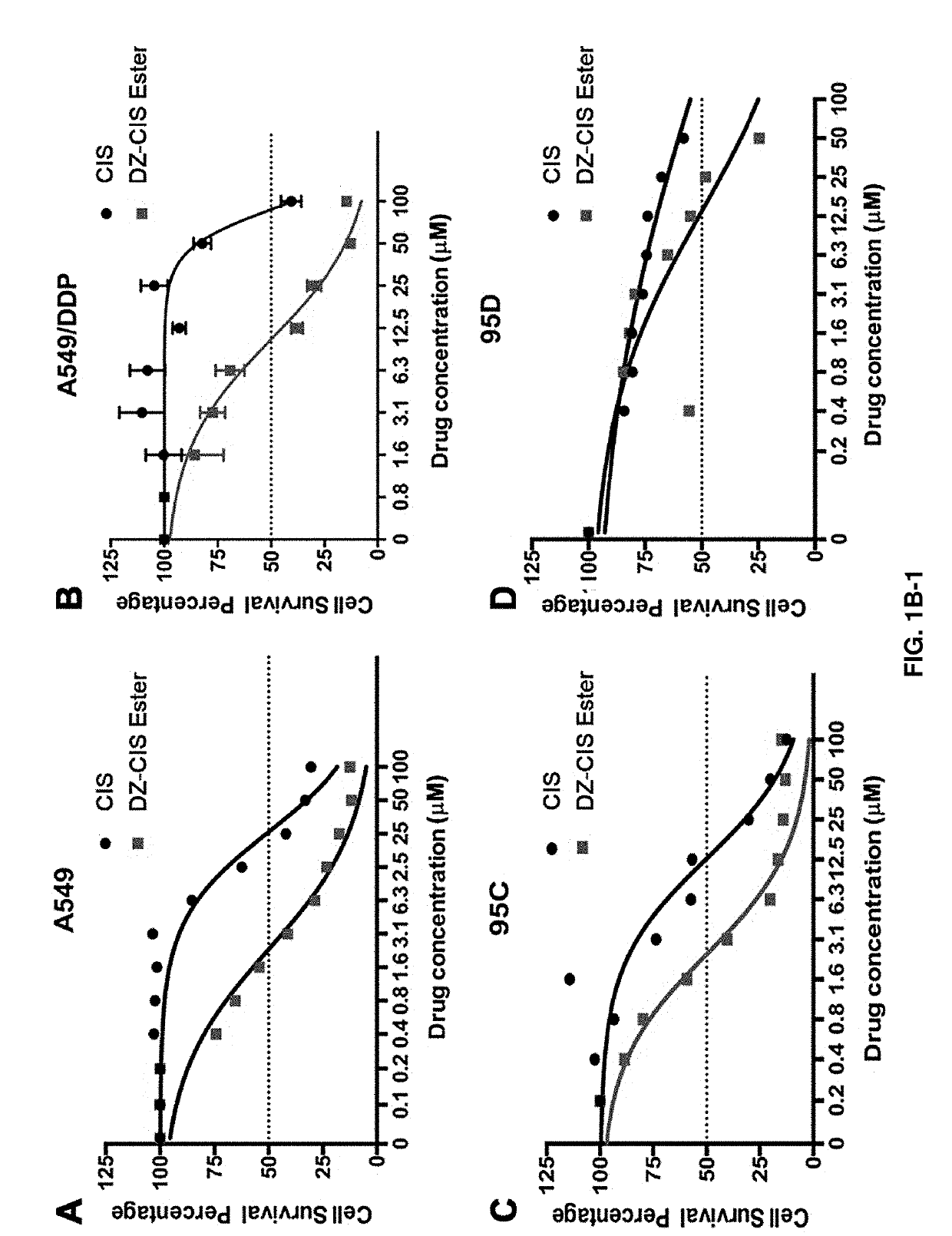Compounds and methods to sensitize cancer cells to tyrosine kinase inhibitors
a technology of tyrosine kinase inhibitors and compounds, which is applied in the field of sensitizer compounds, can solve the problems of insufficient effect, limited benefits, and inability of nir dye conjugates to consistently increase the sensitivity of cancer cells to tkis, and achieves the effects of overcoming cellular tki resistance, reducing the necessary tki dose, and improving the treatment of cancers
- Summary
- Abstract
- Description
- Claims
- Application Information
AI Technical Summary
Benefits of technology
Problems solved by technology
Method used
Image
Examples
example 1
[0085]Human lung cancer cell lines used include non-small cell lung cancer (NSCLC) cell lines and small cell lung cancer cell lines (SCLC). The NSCLC cell lines include parental A-549, A-549 / DDP (a cisplatin-resistant cell line), 95D (a metastatic variant of the parental non-metastatic 95 C), a squamous YTMLC line. H446 is a SCLC cell line. Cells were cultured in medium containing 10% FBS grown as monolayers and treated with different concentrations of drugs for 72 h. IC50s (defined as the concentration that resulted in a 50% decrease of cell proliferation as assessed by a Crystal Violet Assay) were determined in these cultured cells. Data represents the mean±Standard Error of the Mean (SEM) from at least three independent experiments. Drugs tested and compared were Simvastatin, DZ1-Simvastatin ester (DZ1-SIM E), DZ1-Simvastatin amide (DZ1-SIM A), Cisplatin (CIS), and DZ1-CIS. The drugs were used as single agents.
[0086]As shown in the table below, the results indicate that Simvastat...
example 2
[0088]Example 2 shows combination results with EGFR Tyrosine Kinase Inhibitor drugs (TKIs) in an in vitro model of human lung cancer, EGFR-mutated NSCLC cell lines H1975 and H1650, in the presence or absence of sensitization by DZ1-SIM amide in different concentrations. Human lung cell lines H1975 and H1650 serve as models for lung cancer cells with EGFR mutations. The example is performed as indicated in Example 1, with changes in cell lines used, and in drugs and their concentrations used, as indicated below. H-1975 and H-1650 were cultured in medium containing 10% FBS and treated with various concentrations of a TKI (Gefitinib or Icotinib), in the presence or absence of varying concentrations of sensitizing DZ1-SIM amide (in concentrations from 3-7 uM) for 72 h. IC50s (defined as the concentration that resulted in a 50% decrease of cell proliferation as assessed by a Crystal Violet Assay) were determined in these cultured cells. Data represent the mean from at least three indepen...
example 3
[0090]Example 3 shows combination results with EGFR Tyrosine Kinase Inhibitor drugs (TKIs) in an in vitro model of human lung cancer, EGFR-wild-type NSCLC cell lines A549 and A549 / DDP, in the presence or absence of sensitization by DZ1-SIM Amide in different concentrations. Human lung cell lines A549 and A549 / DDP serve as models for lung cancer cells without EGFR mutations; their sensitization of TKIs-induced growth inhibition is shown. EGFR-wild type human lung cancer cell lines, A549 / DDP and A549, were cultured in medium containing 10% FBS and treated with various concentrations of TKIs (Gefitinib or Icotinib), in the presence or absence of DZ1-SIM amide in concentrations from 5-9.5 uM for 72 h. IC50s (defined as the concentration that resulted in a 50% decrease of cell proliferation as assessed by a Crystal Violet Assay) were determined in these cultured cells. Data represent the mean from at least three independent experiments. The data in FIG. 3 is expressed as means+ / −SEM from...
PUM
| Property | Measurement | Unit |
|---|---|---|
| resistivity | aaaaa | aaaaa |
| flow rate | aaaaa | aaaaa |
| concentration | aaaaa | aaaaa |
Abstract
Description
Claims
Application Information
 Login to View More
Login to View More - R&D
- Intellectual Property
- Life Sciences
- Materials
- Tech Scout
- Unparalleled Data Quality
- Higher Quality Content
- 60% Fewer Hallucinations
Browse by: Latest US Patents, China's latest patents, Technical Efficacy Thesaurus, Application Domain, Technology Topic, Popular Technical Reports.
© 2025 PatSnap. All rights reserved.Legal|Privacy policy|Modern Slavery Act Transparency Statement|Sitemap|About US| Contact US: help@patsnap.com



